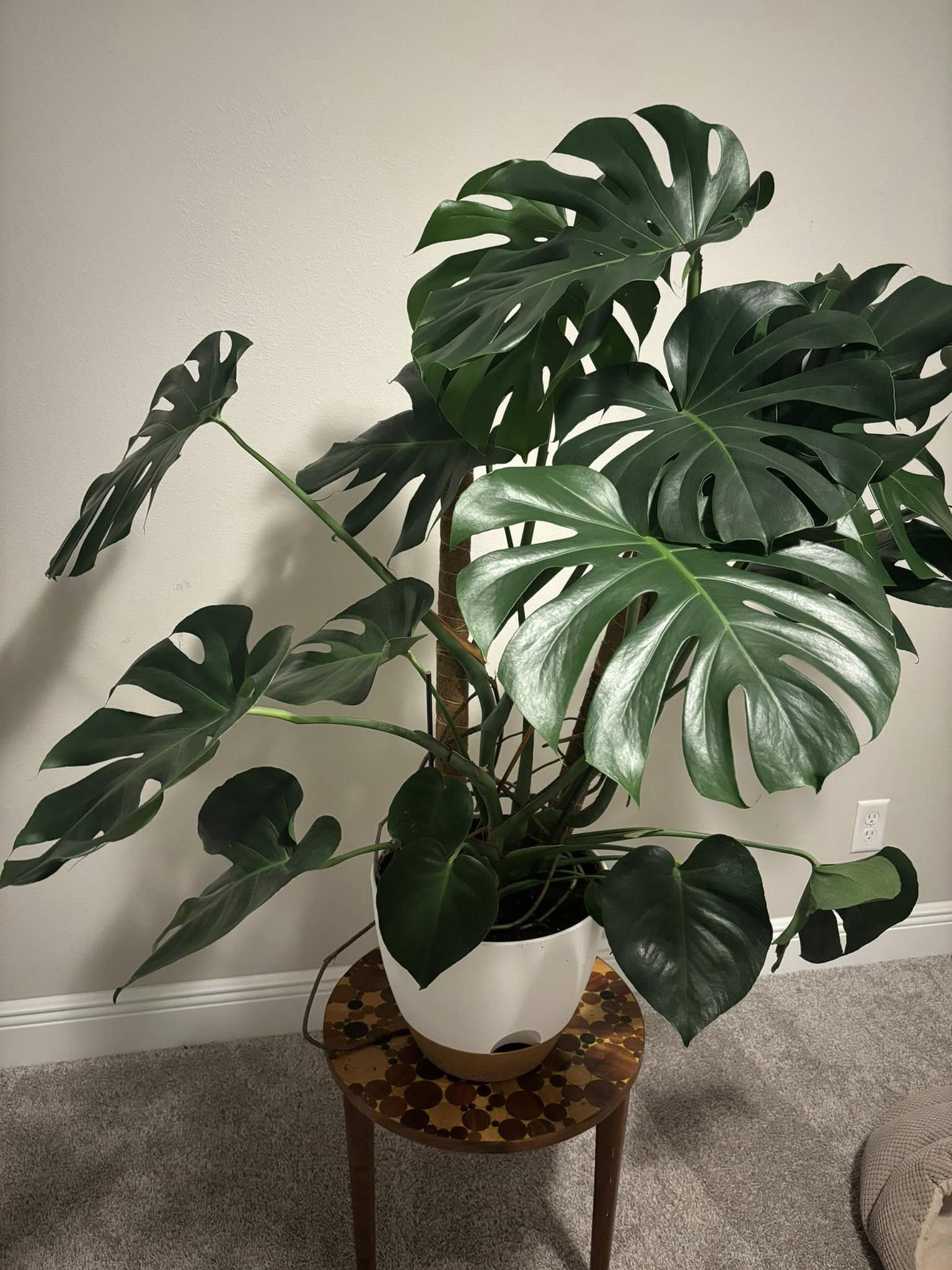
Monstera plants, often called the “Swiss cheese plant,” are among the most popular houseplants due to their striking, fenestrated leaves and easy-care nature. Native to the tropical rainforests of Central and South America, these plants thrive in warm, humid environments and can grow impressively large when given the right conditions.
Whether you’re a seasoned plant parent or a beginner, learning the proper care techniques can ensure your Monstera flourishes. In this guide, we’ll cover 10 expert tips for stunning growth to help your plant thrive and become a statement piece in your home.
I’ve provided detailed information in the article below to help with your concerns, However, if you still have questions or need more help, feel free to share photos of your plants or describe your issue on our Facebook Group. Just join the group and leave a comment on the most recent post — either I or someone from the community will respond as soon as possible. We also share helpful and unique plant care tips daily, so consider joining the group to stay updated!
1. Provide the Right Amount of Light
How much light does a Monstera need?
Monsteras thrive in bright, indirect light. While they can tolerate lower light conditions, insufficient light can cause slower growth and fewer characteristic splits in their leaves.
Best lighting conditions:
- Place your Monstera near a north- or east-facing window for gentle morning light.
- If your space is dim, consider using grow lights to supplement natural light.
- Avoid direct sunlight, which can scorch the leaves and cause brown spots.
2. Water Properly
How often should you water a Monstera?
Overwatering is a common mistake that can lead to root rot. Instead, water only when the top 2-3 inches of soil feel dry.
Watering tips:
- Use a finger test or a moisture meter to check soil dryness.
- Water thoroughly until you see drainage from the bottom of the pot.
- Reduce watering in winter when the plant’s growth slows down.
3. Choose the Right Soil Mix
What kind of soil does a Monstera need?
Monsteras prefer a well-draining, nutrient-rich soil mix that retains some moisture without becoming waterlogged.
Ideal soil components:
- Peat-based potting mix to retain moisture.
- Perlite or orchid bark to improve aeration and drainage.
- Coconut coir or compost for added nutrients.
4. Maintain Proper Humidity Levels
Does Monstera need high humidity?
Since Monsteras are tropical plants, they thrive in humidity levels between 60-80%.
How to boost humidity:
- Use a humidifier near your plant.
- Group plants together to create a microclimate.
- Mist the leaves occasionally, but avoid excessive moisture to prevent fungal issues.
- Place a tray with water and pebbles underneath the pot to naturally increase humidity.
5. Feed Your Monstera Regularly
What is the best fertilizer for a Monstera?
During the growing season (spring and summer), feed your Monstera every 4-6 weeks with a balanced, water-soluble fertilizer.
Recommended fertilizers:
- Balanced liquid fertilizer (10-10-10 or 20-20-20).
- Organic options like compost tea or fish emulsion.
- Slow-release fertilizer pellets for long-term nourishment.
6. Provide Proper Support
Does a Monstera need a moss pole?
Monsteras are natural climbers and benefit from a moss pole or trellis to support their growth.
How to train your Monstera:
- Insert a moss pole into the soil and secure the vines using soft plant ties.
- Mist the moss pole to encourage aerial roots to attach.
- Adjust the ties as your plant grows to maintain upward support.
7. Prune for Healthy Growth
Should you trim a Monstera?
Regular pruning helps maintain shape, remove dead leaves, and promote healthy growth.
Pruning tips:
- Use sharp, sterilized scissors to cut away yellow or damaged leaves.
- Trim leggy growth to encourage bushier foliage.
- Remove aerial roots if they become too long or unruly.
8. Repot When Necessary
How often should you repot a Monstera?
Monsteras should be repotted every 1-2 years, or when you notice roots growing out of the drainage holes.
Repotting steps:
- Choose a pot 2 inches larger than the current one.
- Refresh the soil mix to replenish nutrients.
- Gently loosen the roots before placing them in the new pot.
9. Watch Out for Pests and Diseases
What are common Monstera pests?
Monsteras can be susceptible to spider mites, mealybugs, thrips, and scale.
Pest prevention:
- Regularly inspect the leaves for small bugs or webbing.
- Wipe leaves with a damp cloth to remove dust and pests.
- Use neem oil or insecticidal soap if an infestation occurs.
10. Keep Leaves Clean and Shiny
How do you clean Monstera leaves?
Dust can accumulate on the large Monstera leaves, blocking light absorption and slowing growth.
Leaf cleaning tips:
- Wipe leaves with a damp cloth every few weeks.
- Use a mild soap solution for stubborn grime.
- Avoid using leaf shine sprays, as they can clog pores.
